Presidio of San Francisco: Birding Hotspot
By Alan Hopkins
With a bird list of more than 200 species, the Presidio has become a beloved site for Bay Area birdwatchers. The area has diverse habitats: ocean, bay, marsh, riparian, woodland, and more.
Founded in 1776, the Presidio was a military installation established first by the Spanish and held briefly by the Mexican Government. Then in 1846, after the Mexican American War, the Presidio became a holding of the United States. The 1,491 acre base was decommissioned in 1989 and became part of the Golden Gate National Recreation Area in 1994. Like some other military bases, large tracts were left undeveloped and as a result, remnants of San Francisco’s original flora and fauna can still be found there.
My personal history of birding the Presidio goes back to the 1970s and birding with Mary Louise Rosegay when the base was still run by the army. One of the first female graduates of Cornell’s orinthology program, Mary Louise was an avid birder and advocate for the Presidio’s birds. She wrote the first bird list for the Presidio as well as countless letters trying to protect the birds and their habitats. I have a vivid memory of seeing my first Red Crossbill on a trip Mary Louise led for Golden Gate Bird Alliance. The Presidio wouldn’t be what it is today without Mary Louise and the young people she inspired.
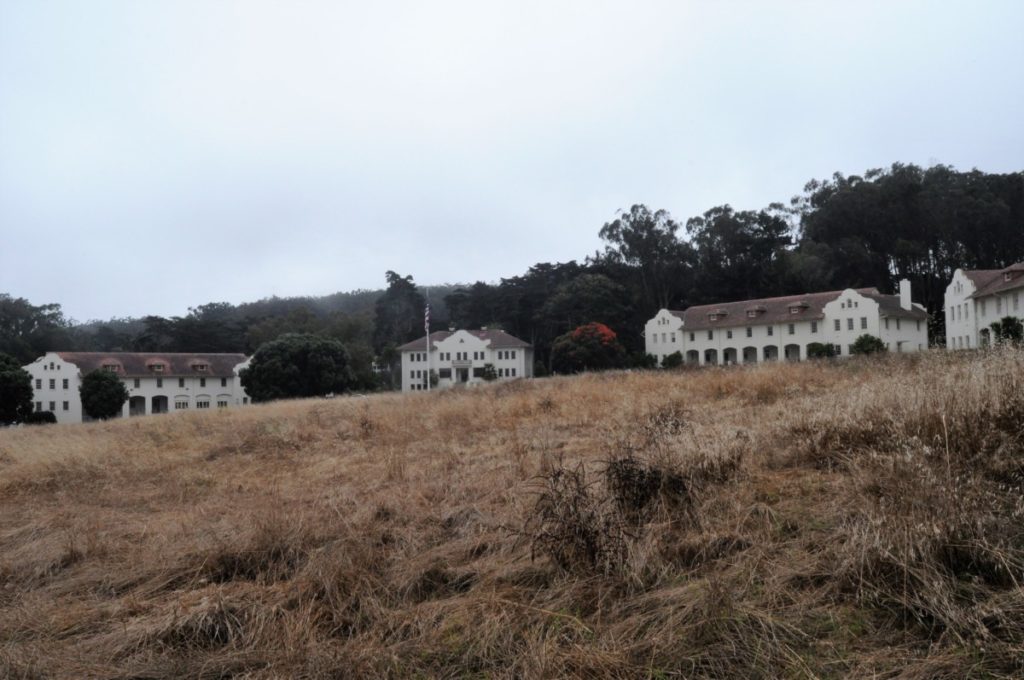
Mary Louise wouldn’t recognize parts of the Presidio today. Since it became a national park, an enormous effort has been made to restore much of its natural habitat. Back in its time as a military base, Crissy Field was an asphalt lot surrounded by a cyclone fence, El Polin Spring was a 1950s-style picnic area at the edge of a landfill, and Lobos Dunes and Presidio Hills held large parking lots and ball fields. As restoration continues and new habitats become mature, the Presidio will look much different in the future than it does today.
There isn’t space to go into depth about all the Presidio’s birding hotspots, so here are some highlights.
Northern Coastline from Fort Point to Crissy Field
The Golden Gate Promenade runs from the Marina to Fort Point and offers spectacular views of the Golden Gate Bridge, San Francisco Bay, and the city skyline. Many of the Presidio’s 5 million annual visitors use this path.
Historic Fort Point has Pigeon Guillemots nesting in the gun turrets in the summer. Common Murres and Brandt’s and Pelagic Cormorants pass beneath the bridge, and wintering Western Grebes are just offshore. Moving east, the beach east of the Gulf of the Farallones Visitor Center and Coast Guard Pier is protected for wintering Snowy Plovers. (Golden Gate Bird Alliance volunteers have held monthly beach clean-ups here since 2012.)
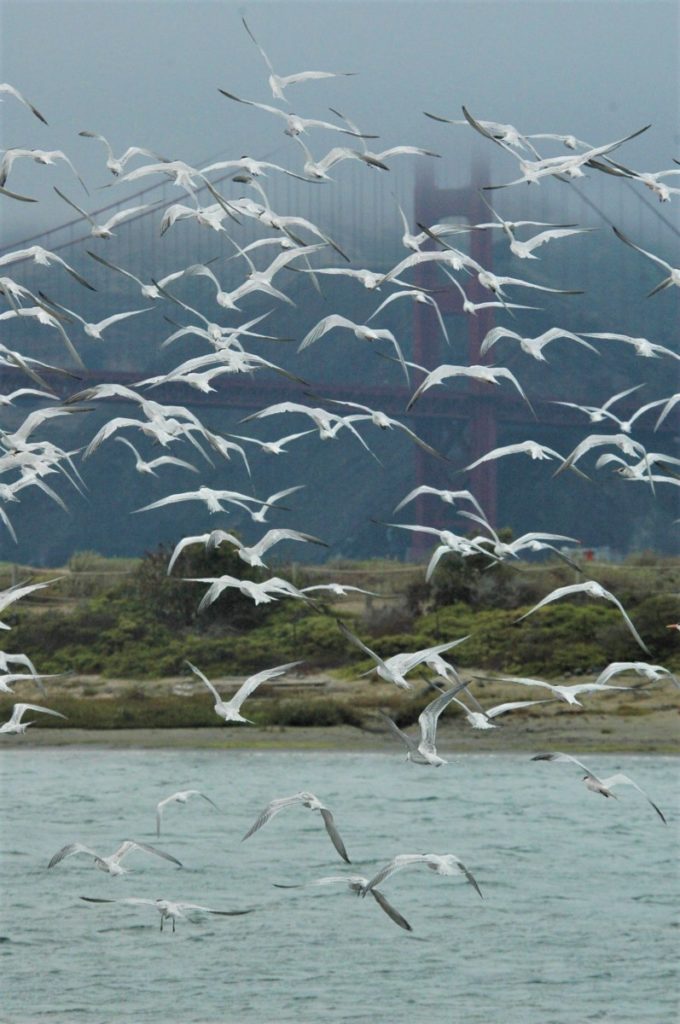
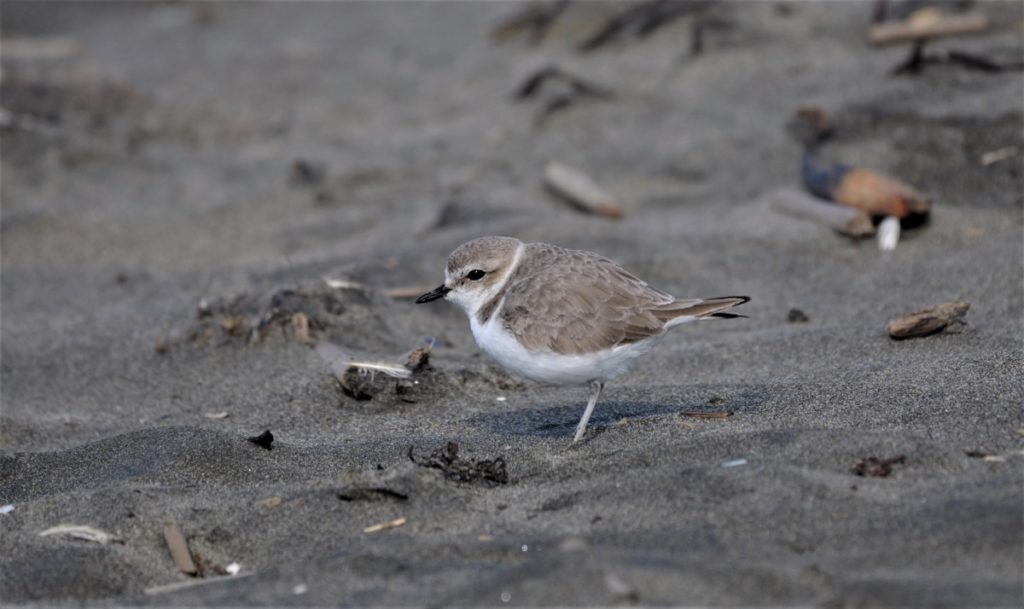
The lawn at Crissy Field can have several swallow species and Lesser Goldfinches in the summer. During the nonbreeding season, watch for Say’s Phoebes and Western Meadowlarks. Some of the rarities have included Red-throated Pipit, Bobolink, and Yellow-headed Blackbird.
Crissy Marsh is more a lagoon than a marsh. Egrets and herons can be found along its tideline. Killdeer and Long-billed Curlew are the common shorebirds; however, many other species can also be found. On the lagoon, watch for wintering Greater Scaup, Bufflehead, Ruddy Duck, Pied-billed Grebe, and Double-crested Cormorant. The sand spit near the bridge is a good place to study gulls and terns. (You can read more about birding the lagoon in this 2016 blog post by David Assmann.)
Western Bluffs and Shoreline
Entering the Presidio from Highway 1 at the Golden Gate Bridge, follow Lincoln Boulevard southwest under the freeway. Just south of the intersection of Story Avenue and Merchant Road, turn into Langdon Court to reach the Golden Gate Overlook. Birders will want to cross the trail to Battery Godfrey. On the rocks 200 feet below, look for oystercatchers, turnstones, Surfbirds and tattlers. Check the surf for loons and grebes and look through the Surf Scoters for a Harlequin Duck. Red-tailed Hawks and Turkey Vultures float along the bluffs at eye level, and Peregrine Falcons frequent the bridge.

During migration, with the right conditions, Battery Godfrey can be magical. On the first few mornings of a heat wave with easterly winds, migrants are concentrated along the bluffs and flocks of tanagers, kingbirds, swifts and swallows can be seen. Any migrating bird is possible; however, you need to be quick with the optics because few birds actually stop. In the afternoon, the raptors funneled into Hawk Hill in Marin frequently head across the Golden Gate and over Battery Godfrey.
Walking south from the Battery, you’ll connect with the Batteries to Bluffs Trail. The .7 mile trail takes you down to Marshall’s Beach and back up to Battery Crosby. The strenuous walk allows for better views of shorebirds and listening for Wrentits. Watch for Spotted Towhees in scrub to the south of Battery Crosby.
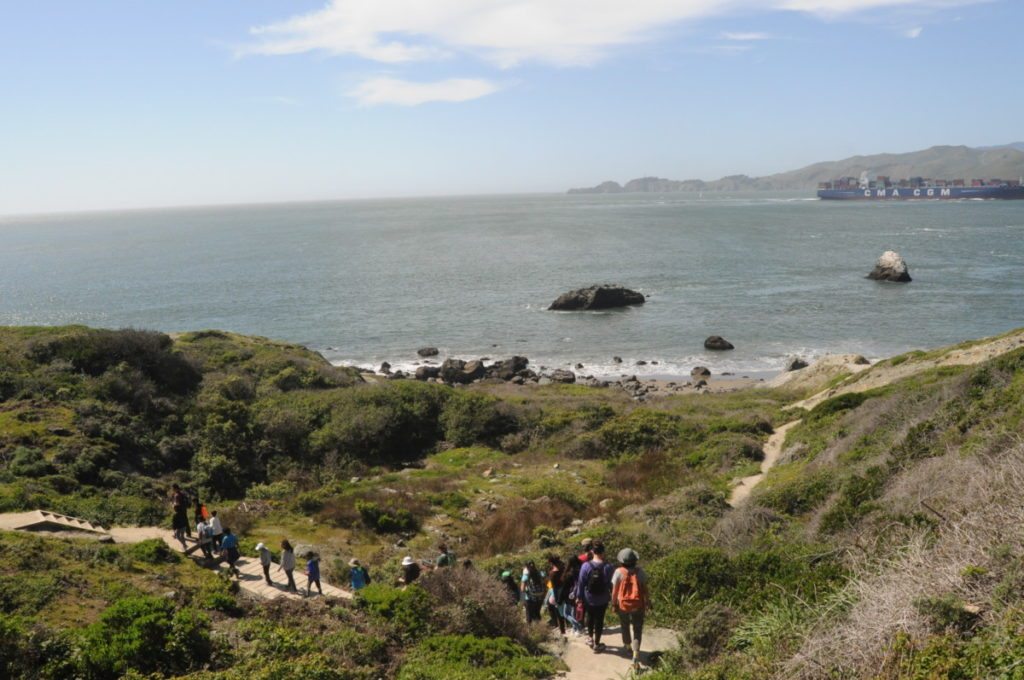
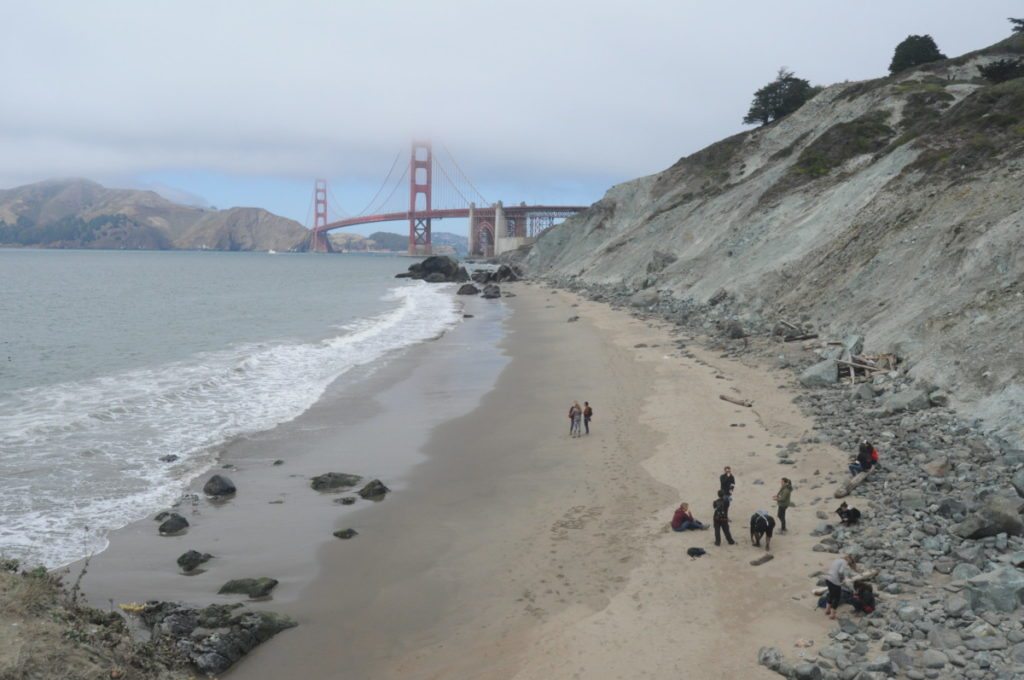
Baker Beach to the south usually has more people than birds, but a Northern Wheatear was found there in 1995. Lobos Valley to the east of Baker Beach has a meandering boardwalk that leads through a restored scrub and dune community with oak woodlands along Lobos Creek. The trees around the buildings housed the first nesting San Francisco Western Bluebirds in recent memory.
Fort Winfield Scott, Kobbe Avenue, and Upton Avenue
Portions of the Fort’s parade grounds are left fallow during the winter: Look for Western Meadowlark, Say’s Phoebe, and sparrows. The field is a favorite for summer swallows, and bluebirds can be found on the wires. The area is also one of the best places to look for orioles. Scott’s Oriole was named in honor of General Winfield Scott, who commanded U.S. forces in the Mexican War; however, General Scott was never stationed at the Presidio and the Orioles here are Hooded Orioles. Look for them at the south end of the field in the red-flowering New Zealand Christmas trees and nesting in the Palms along Upton Ave.


The flowering trees in this area can also have Pygmy Nuthatches, Chestnut-backed Chickadees and hummingbirds. During migration, watch for warblers and Western Tanagers in the flowers. Dragonfly Creek is a newly restored area that has Hutton’s Vireos and Pacific Wrens and can be found by walking down the steps past the tennis courts.
Mountain Lake
This is the Presidio’s largest freshwater feature. Years of extensive restoration have paid off. Watch for nesting Red-winged Blackbirds in the tules, with Ruddy Ducks and Pied-billed Grebes along the edges. Gray Catbird, Hooded Warbler and Orchard Oriole have been found in the willows and elderberries during migration. The new East Arm of the lake has had Blue-winged Teal.
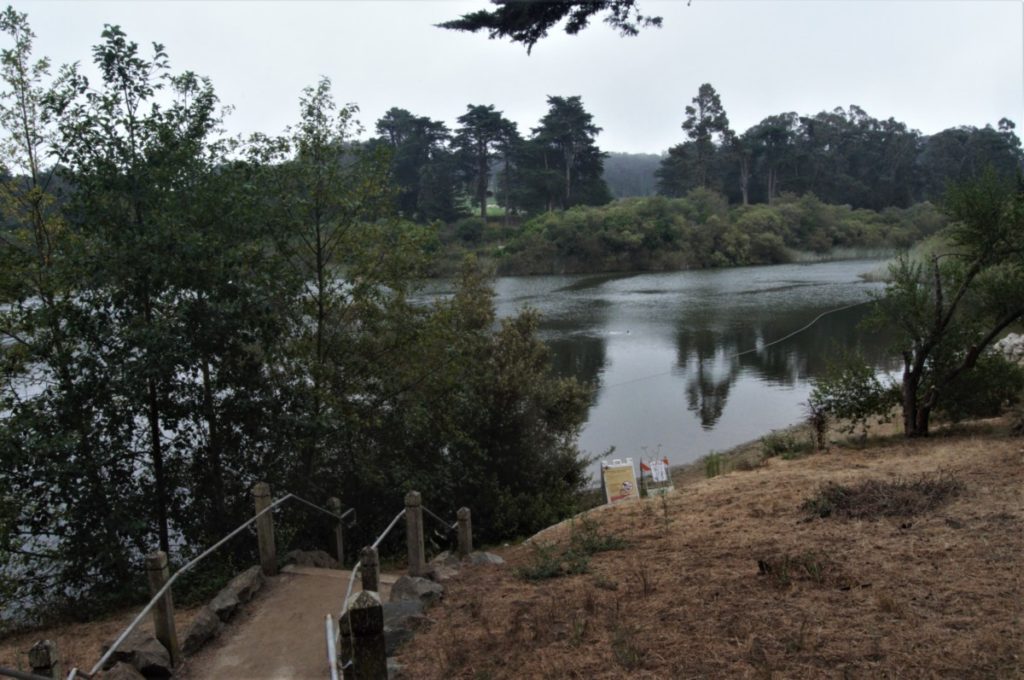
Tennessee Hollow Watershed
The Tennessee Hollow Watershed is the most exciting project in the park. Tons of fill and conduit were removed to allow water to come to the surface and flow to the bay once again. Where the stream has been daylighted, riparian and wetland plants are growing.

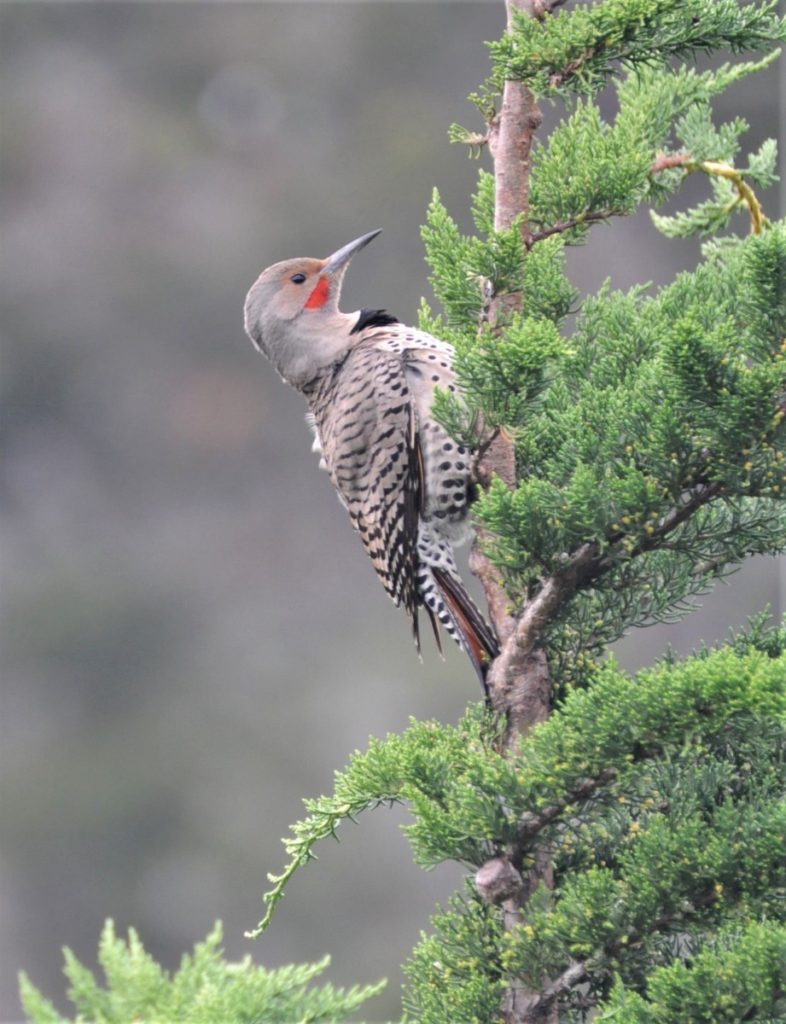
For a good hike, I like to start at Inspiration Point off Arguello Boulevard. To start down the watershed, look for the Ecology Trail steps on the south side of the lot. At the bottom of the steps, I like to go to the right along the lower Ecology Trail. In the wooded area watch for nesting Nuttall’s Woodpeckers and nuthatches. When the path heads down a steep hill, you can go to the left or right: to the left you will go through grasslands and conifers, while to the right is coastal scrub. Townsend’s Solitaires have been seen in the Toyons here.
The goal is to get to the loop at El Polin Spring below. This area has greatly changed since I birded here with Mary Louise. David Anderson wrote about the spring on this blog in 2012, and the vegetation has matured since then The water trickles down past the ponds and picnic tables and back into a culvert under McArthur Street. I typically continue down the street as well, watching the trees for orioles in the summer and sapsuckers in the winter.


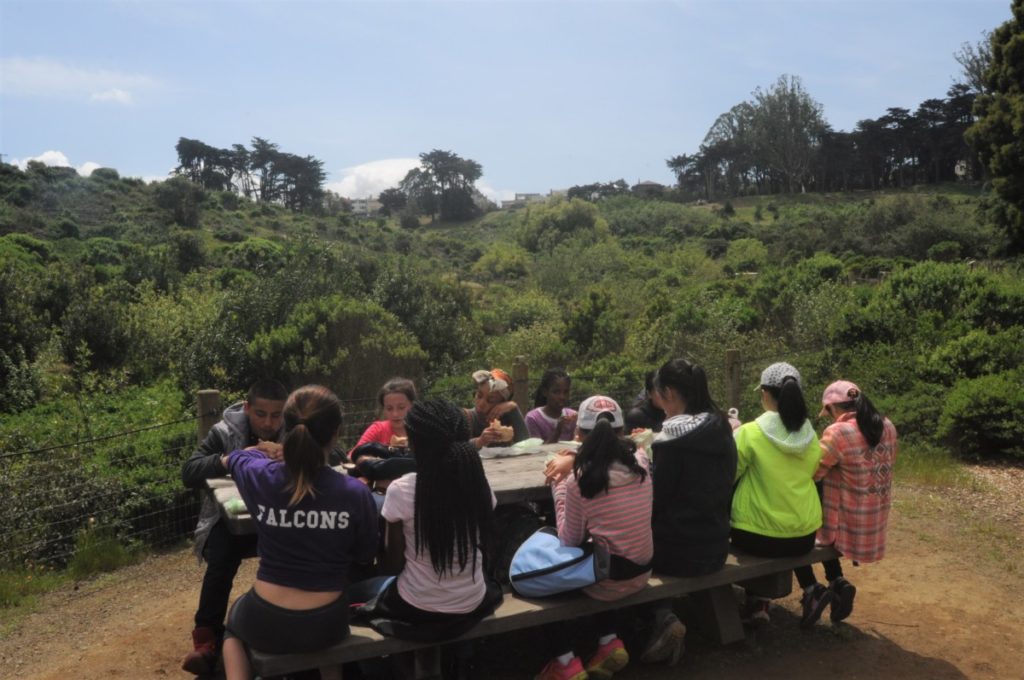
Recently daylighted McArthur Meadow parallels McArthur Street as it turns east. Killdeer nested here last spring. Check the meadow from the Lover’s Lane Bridge and cross Presidio Boulevard to find the Tennessee Hollow Trail to the YMCA Reach restoration area; then cross Lincoln Boulevard to Thompson Reach restoration and the Wayburn Redwood Grove. Watch for Wilson’s Warblers, Lesser Goldfinches, and Allen’s Hummingbirds in the summer and sparrows in the winter.
The trail ends at a bridge where the water flows into a pipe. In the future, the trail will continue to a new wetland at Crissy Field. To get to Crissy Field, now you can walk (not drive) along Girard Road to the east end of the field. At this point you can double back to Lincoln Boulevard and the Visitor Center or catch the Presidigo Shuttle from the Transit Center back to Inspiration Point.
Fast Facts:
Location: The Presidio is located in the northwest corner of San Francisco, south of the Golden Gate Bridge. The Visitor Center is at 210 Lincoln Boulevard.
Hours/fees: The Visitor Center is open 10 a.m. to 5 p.m. The park is open all hours, 365 days a year, and is free. Most areas have metered parking and times vary. The Presidigo Shuttle — which runs within the park and to/from downtown — is free. There is a very limited amount of camping at the Rob Hill Campground.
Dogs: Dogs are permitted on leash in most areas. Dogs are permitted off-leash on most of Crissy Field.
Habitats: Ocean, beach, coastal bluffs, bay, tidal lagoon, fresh water lake, riparian stream, cosmopolitan woodlands.
Key Birds:
Year round: Black Oystercatcher, Pelagic Cormorant, Brandt’s Cormorant, Common Murre, Western Grebe, Peregrine Falcon, Wrentit, Hutton’s Vireo, Pygmy Nuthatch, Red-masked Parakeet.
Spring/Summer (March to July): Brown Pelican, Heermann’s Gull, Allen’s Hummingbird, Violet-Green Swallow, Orange-crowned Warbler, Wilson’s Warbler, Hooded Oriole,
Fall/Winter (August to February): Surf Scoter, Snowy Plover, Wandering Tattler, Whimbrel, Long-billed Curlew, Black Turnstone, Surfbird, Mew Gull, Thayer’s Gull, Townsend’s Warbler, Golden-crowned Sparrow.
Getting there: Most of the good birding sites can be accessed by car. However, many areas have metered parking or time-limited parking. Traffic can be at a standstill on the streets that lead to the Golden Gate Bridge on weekends and holidays. There are frequently special events at Crissy Field and the Parade Grounds when all the parking will be taken. The free Presidigo Shuttle is an excellent way to move around the park, as well as to get there from downtown. There are 11 miles of hiking trails and also miles of bike trails.
Our two major highways meet in the Presidio before crossing the Golden Gate Bridge. From Highway 1, which enters from the north and south, take exit 439 at the toll plaza. From Highway 101, which runs along Lombard Street, enter the Presidio from the left lane signal just as the road bends to the north, or take exit 437 and turn south onto Girard Road.
To enter from side streets: From the right lane, Marina Boulevard becomes Old Mason Street at Crissy Field. El Camino del Mar enters the Presidio at 25th Avenue and becomes Lincoln Boulevar. Arguello Boulevard enters from the south and will lead to the Main Post.
SF Muni buses: The 28 bus stops at the Toll Plaza, the 29 stops at Baker Beach, and the 43 stops at the Transit Center. For a more detailed transit map, visit the Presidio website.
Restrooms: The Transit Center, Crissy Field, the Warming Hut, Fort Point, El Polin Spring, and Baker Beach all have public restrooms.
Nearby cafes/restaurants: The Presidio has many places to eat, from quick-and-easy at the Warming Shack and Transit, to high-end dining at Arguello and the Commissary. See presidio.gov/food/restaurants.
For more information: The Presidio has a very extensive website with maps, trails, restaurants, and activities at presidio.gov/#PresidioSF. At the Visitor’s Center you can get a Presidio Visitor Guide and purchase Josiah Clark’s Presidio Bird List.
Long-time Golden Gate Bird Alliance member Alan Hopkins was on the Board of Directors and served as chapter President. Alan was a co-founder of the San Francisco Christmas Bird Count and has led Audubon field trips since 1978. He is an educator for Kids in Parks in San Francisco and creates art in his studio at the Hunters Point Shipyard. You can view some of his art at alanshopkins.weebly.com.
